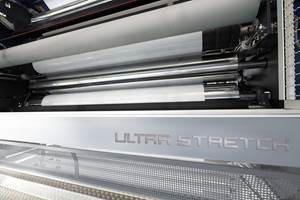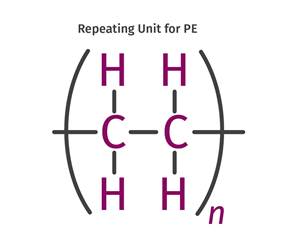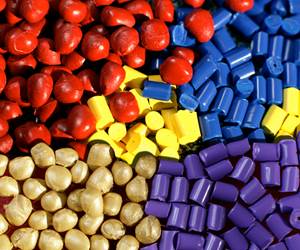July 2025: Prices for Volume Resins Flat to Down Heading to Third Quarter
Apparent stabilization was driven by supply-and-demand dynamics, but the uncertainty of tariffs and the hurricane season are looming.
Projections for prices of all volume resins going into the third quarter were generally flat to down despite being slightly up in a few cases, based on supply/demand fundamentals, lower feedstock costs, and weaker domestic and exports sales. Looming over projections are concerns for the economy’s overall direction; continued lack of clarity on tariffs; and what is forecast to be an active hurricane season.

These are the views of purchasing consultants from Resin Technology Inc. (RTi); David Barry, associate director for PE, PP, and PS at OPIS’s PetroChemWire (PCW); CEO Michael Greenberg of Resintel, the market intelligence service of The Plastics Exchange (TPE); Scott Newell, executive VP polyolefins at distributor and compounder Spartan Polymers; and Mike Burns of Plastic Resin Market Advisors.
“The market is still under the cloud of tariffs and high-level trade negotiations, as well as general economic and geopolitical uncertainty, though for many it is ┤¾¤¾┤½├¢ as usual,” noted Resintel’s Greenberg.

PE Prices Flat

Polyethylene (PE) prices in May rolled over, following April’s 3¢/lb drop. This came despite suppliers’ 5¢/lb increase nominations for May. However, at press time, some suppliers had moved up those increases to June, including one that issued a 6¢/lb price hike for July. These moves are viewed as more of a contingency for what is expected to be an active hurricane season, according to PCW’s Barry, Resintel’s Greenberg, Plastic Resin Market Advisors’ Burns, and Kevin Mekaru, RTi’s senior ┤¾¤¾┤½├¢ leader commodity plastics.
Barry noted that the June-July time frame is not typically when suppliers raise prices in this market. “Prices have stabilized but are not moving up,” Barry said, adding that a key issue is that Asian PE resin prices remain very low.
Several PE suppliers were telling customers they want to see specific order volumes to better balance supply/demand fundamentals, according to Barry. This is not the case for some of the newer players such as Shell and the SABIC/ExxonMobil venture.
These market conditions follow an April production slowdown to match decreased exports. However, as Burns noted, “The speed of the return of production rates, and the timing of the return of steady exports to China will be leading market indicators through the summer months.” He recommended processors review their inventory needs, including weather-related disruptions.
“Low-price inventory has minimal downside opportunity,” Burns said. “Prices are expected to remain steady through the summer months.”
RTi’s Mekaru ventured that June had potential for a 3¢/lb price decline with July flat to slightly up. “Some processors were hoping for a nickel relief last month (April), so they’re seeking another official 2-cent decline, but the firmer spot market during May makes that less likely,” Resintel’s Greenberg summarized.
PP Prices Bottom Out?

Polypropylene (PP) prices in May were flat, in step with propylene monomer contracts, which rolled over from April’s 6¢/lb drop to 38¢/lb. PP prices may have bottomed out in June going into the third quarter, according to PCW’s Barry, Spartan Polymers’ Newell, Resintel’s Greenberg, and Paul Pavlov, RTi’s VP of PP and PVC. Both Barry and Pavlov speculated that PP prices in the June-July period could move up by 1-2¢/lb based on some monomer price projections, despite the fact that monomer supply was more balanced.
While this is also the case for PP due to suppliers dropping plant operating rates to the upper 70s in percentage terms, Newell noted that despite supplier inventories dropping, days of supply are still above 40, compared to a more “healthy” mid-to-high 30 days. He saw potential for pricing to be flat to a bit down, adding that while there is a slightly more clarity regarding tariffs, there is still some cautiousness among processors due to other red flags such as consumer belt tightening.
“We have a cautiously optimistic view of the PP market,” Resintel’s Greenberg said. “With low downstream inventories, seasonal hurricane risks and on-purpose PDH-based propylene monomer plants’ unpredictability back in play, we see more upside than down and have been patiently restocking our PP positions as favorable opportunities arise, but it has not been easy.”
According to PCW’s Barry, because most market participants viewed April/May as the near-term bottom for propylene and PP prices, there was elevated buying interest. Forecasts of an active hurricane season further incentivized stock-building among processors.
PS Prices Down, Then Flat

Polystyrene (PS) prices in May were flat-to-down by about 2¢/lb, after April’s 3¢/lb drop, which reversed the March increase, according to PCW’s Barry and RTi’s Pavlov. “PS continued to be a buyer’s market,” Pavlov said.
Both sources ventured that PS prices in the June-July time frame would remain flat. They characterized domestic demand as flat with ample supply in the spot market that led to some spot export offers. This despite suppliers dropping plant operating rates. Meanwhile, feedstock costs have been pretty stable. The implied styrene price based on a 30% ethylene/70% benzene spot formula was unchanged at 30.5¢/lb at May’s end, but up 2.2¢/lb from the start of that month, according to Barry.
PVC Prices Flat to Down

Polyvinyl chloride (PVC) prices in May rolled over once again, following their 3¢/lb increase in the first quarter, according to RTi’s Pavlov. He expected a further rollover in June with a downward trajectory — perhaps in the 3¢/lb range — for at least the first part of the third quarter. Overall, the first half of the year showed higher demand compared to 2024, largely due to domestic and export demand (primarily from Latin America) from the pipe sector, which accounts for about 40% of the market. Still, the weak housing market along with lower feedstock costs, lower global PVC prices, and a 10% increase in domestic capacity contributed to a flat-to-downward trend.
PET Prices Flat to Slightly Up

Polyethylene terephthalate (PET) prices in May were flat, having moved up by 1-2¢/lb in April. The pricing trajectory for June and into the third quarter was projected to be flat to slightly up due to the higher costs of feedstocks PTA and paraxylene, which are not exempt from tariffs, unlike PET resin, according to RTi’s Mekaru. Though he noted that feedstock costs through much of the first half of this year were nearly 9% lower than in 2024.
“We simply have not seen the spikes in demand that typically take place during second quarter,” Mekaru said. To date, well-priced PET imports continue to be a factor in this market. Tariffs on aluminum could positively impact PET demand going forward.
ABS Prices Flat to Down
Acrylonitrile butadiene styrene (ABS) prices approaching the end of second quarter were generally flat but with the potential for downward pressure due to slower demand in key markets such as construction and automotive, lower feedstock costs, and strong inventories of both domestic and competitively priced imports, according to Mark Kallman, RTi’s VP of PVC, PET and engineering resins. INEOS was transferring its U.S. production of ABS to Mexico in June after the permanent shutdown of its Ohio ABS plant, which accounted for nearly 20% of North American ABS production. Kallman ventured this pricing trend would continue into the third quarter.
PC Prices Flat to Down
Polycarbonate (PC) prices were heading toward the third quarter as flat to down, despite some suppliers’ price nominations of 15¢/lb going into the next quarter, according to RTi’s Kallman. He attributed this trend to lackluster demand in key market sectors such as automotive and construction, lower feedstock costs and well-priced imports from Pacific Rim countries. The latter were up 10% from 2024. Moreover, the continued soft demand through most of the second quarter was evident when there was no impact on supply tightness during scheduled maintenance turnarounds during the first quarter.
Prices of Nylon 6, 66 Flat to Down
Prices of nylon 6 were relatively flat though April and May and were trending flat to slightly down going into June and beyond, according to RTi’s Mekaru. He attributed this to projections of reduced feedstock costs going into the third quarter, higher resin inventories and likely throttling back of production. Meanwhile, key suppliers were out with price increase nominations of 7¢/lb in June.
Similarly, while prices of nylon 66 appeared to have remained largely flat through second quarter, a downward trend was expected going into the third quarter as key feedstock costs were projected to drop, according to RTi’s Kallman.
A key exception was halogenated flame-retardant nylon 66 grades, due to higher prices of additives sourced from Asia. Still, suppliers were out with price-increase nominations of 7-11¢/lb for June as they aimed to increase profit margins.
Related Content
The Fundamentals of Polyethylene – Part 1: The Basics
You would think we’d know all there is to know about a material that was commercialized 80 years ago. Not so for polyethylene. Let’s start by brushing up on the basics.
Read MorePrices of All Five Commodity Plastics On the Way Up
Despite earlier anticipated rollover in prices for most of the volume commodity resins, prices were generally on the way up for all going into the third month of first quarter.
Read MoreThe Fundamentals of Polyethylene – Part 2: Density and Molecular Weight
PE properties can be adjusted either by changing the molecular weight or by altering the density. While this increases the possible combinations of properties, it also requires that the specification for the material be precise.
Read MoreFundamentals of Polyethylene – Part 6: PE Performance
Don’t assume you know everything there is to know about PE because it’s been around so long. Here is yet another example of how the performance of PE is influenced by molecular weight and density.
Read MoreRead Next
April 2025: Mixed Bag for Prices of Volume Resins
The end of the first quarter marked higher prices for polyolefins and relatively flat pricing for nearly all other resins.
Read MoreMay 2025: Prices for 4 of the 5 Commodity Resins Flat-to-Down
PET is the exception from this general trajectory, at least for now.
Read MoreJune 2025: Prices for the Five Commodity Resins Flat to Down
This overall resin pricing trend could continue into the start of the third quarter.
Read More












